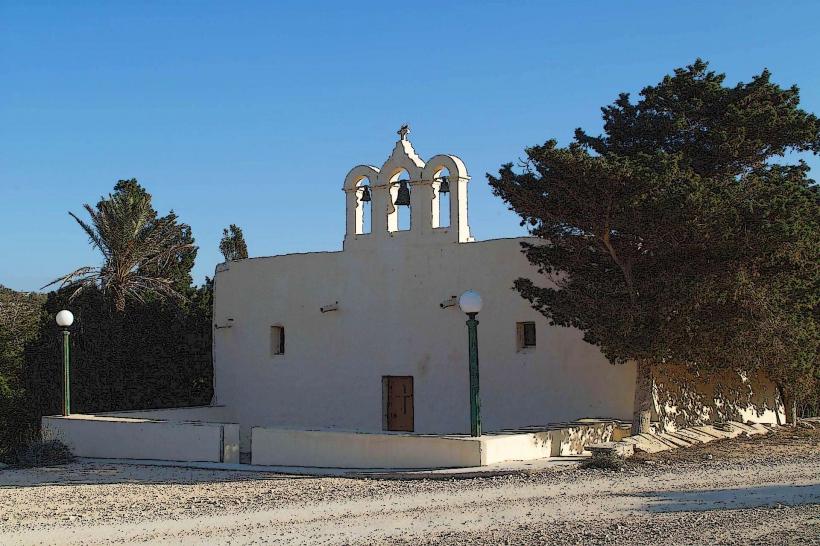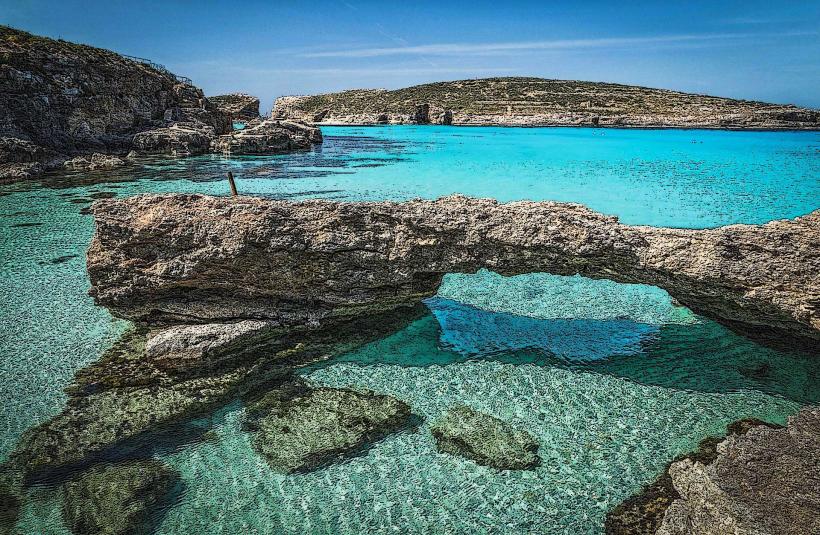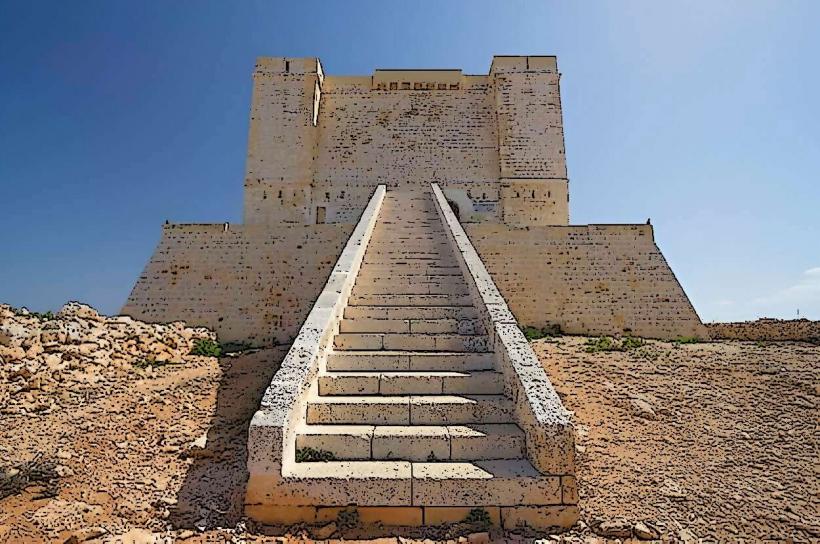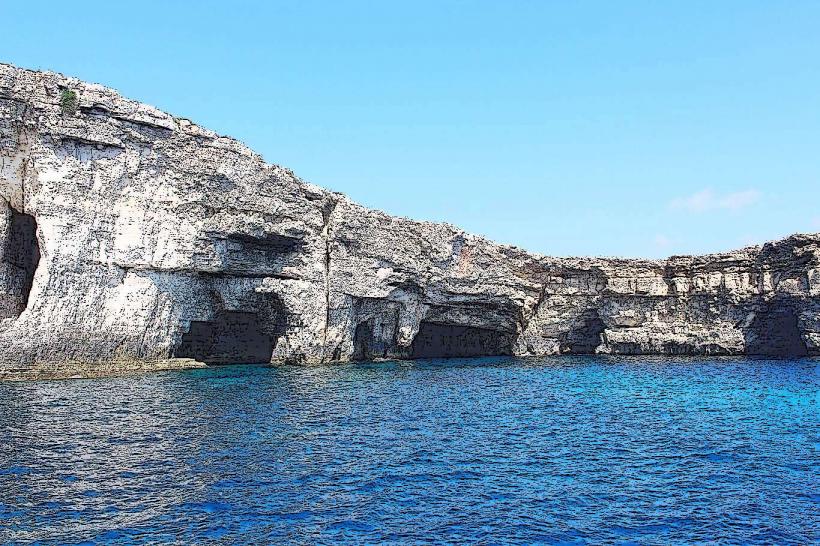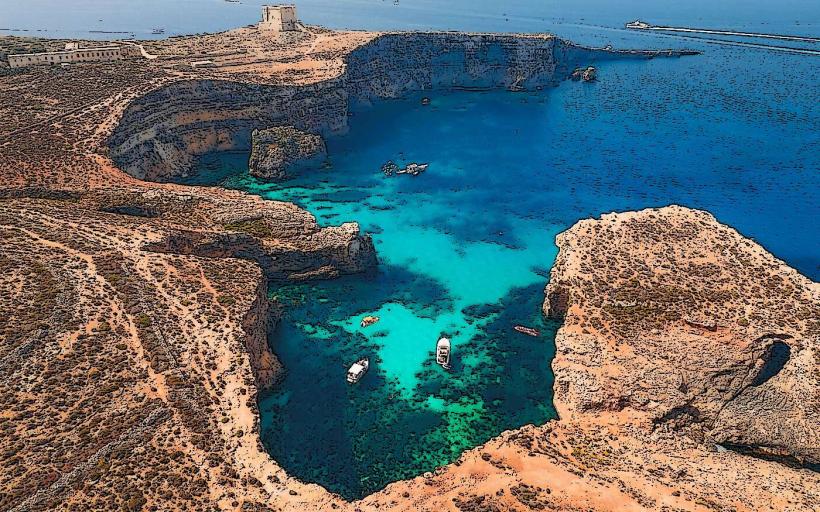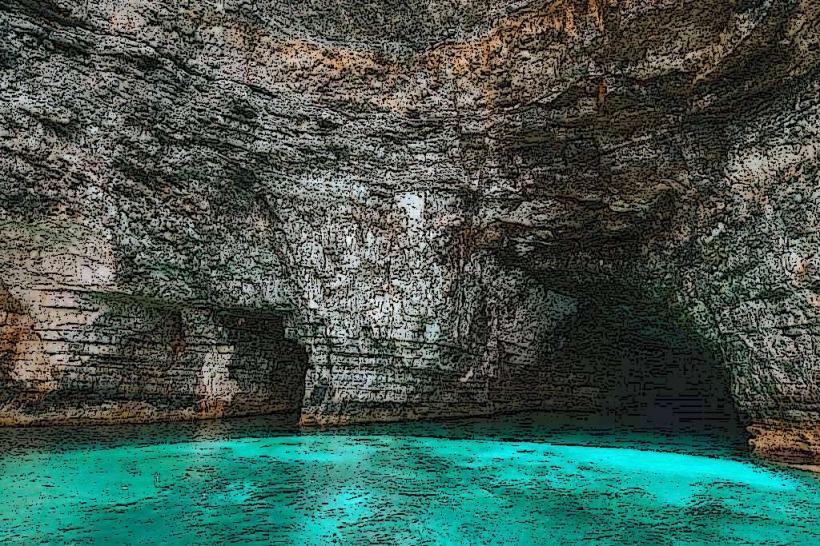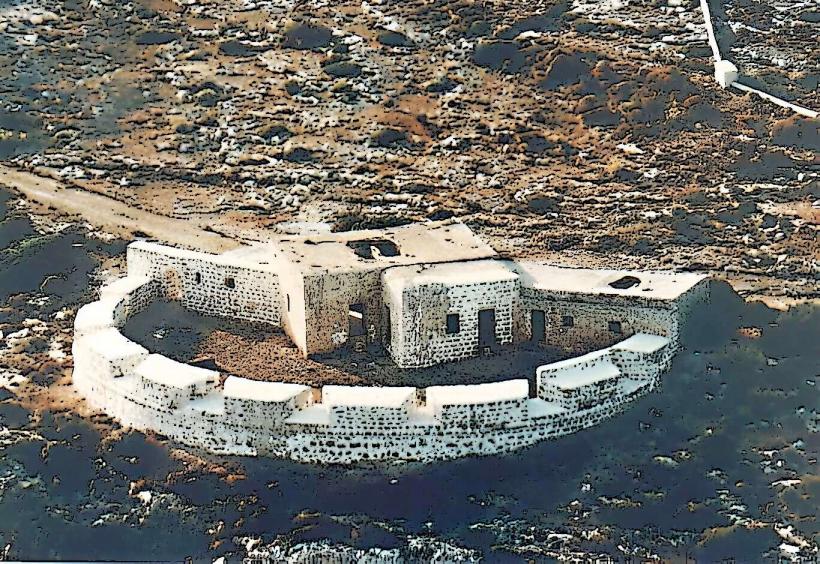Information
City: CominoCountry: Malta
Continent: Europe
Comino is the smallest inhabited island in the Maltese archipelago, located between Malta and Gozo. Known for its pristine beaches, crystal-clear waters, and rugged landscapes, Comino is a popular destination for day-trippers, nature enthusiasts, and those seeking a peaceful retreat. It offers a serene contrast to the busier islands of Malta and Gozo, making it an ideal spot for relaxation, water sports, and exploration.
Geographical and Natural Features
- Size and Location: Comino is very small, covering an area of just 3.5 square kilometers (1.4 square miles). It is situated between the larger islands of Malta and Gozo, and it can be easily accessed by boat from both. The island is part of the Maltese National Park and is known for its wild and undeveloped nature.
- Landscapes: Comino is largely uninhabited, with the exception of a few seasonal residents and workers who support the tourism industry. The island features rugged terrain, cliffs, and small valleys, and it is primarily made up of limestone rock. It is covered in Mediterranean scrub and wildflowers, making it a haven for nature lovers.
- Beaches and Coves: Comino is renowned for its beautiful beaches and secluded coves, with some of the most popular being the Blue Lagoon, Santa Marija Bay, and Comino Beach. The island's small size means that visitors can easily walk from one area to another and enjoy the peaceful surroundings.
Historical Overview
- Early History: Comino has been inhabited since ancient times, with evidence of early settlements by the Phoenicians and Romans. The island has also been used by the Knights of St. John for various military and religious purposes. However, it was largely uninhabited for many centuries, remaining a quiet retreat until more recently.
- The Knights of St. John: During the time of the Knights of St. John, Comino was used as a strategic location for defense and communication. The Knights built a fort on the island, known as Fort Santa Marija, which still stands today. The island was also a place of refuge and rest for the Knights during their campaigns in Malta and other Mediterranean territories.
- Modern Times: In the 20th century, Comino remained sparsely inhabited, with its main use being for agriculture and grazing. In recent decades, the island has become a popular tourist destination, primarily due to the natural beauty of its beaches, its proximity to Malta and Gozo, and its status as a protected nature reserve.
Key Attractions
- The Blue Lagoon: The Blue Lagoon is Comino’s most famous attraction, and it is renowned for its vibrant turquoise waters, shallow depths, and stunning clarity. It is a popular spot for swimming, snorkeling, and boating, attracting both day-trippers and visitors looking for a peaceful day by the sea. The Blue Lagoon is situated between Comino and the small island of Cominotto, and it is accessible by boat from both Malta and Gozo.
- Santa Marija Bay: Santa Marija Bay is another beautiful beach on Comino, offering clear waters, golden sand, and a more tranquil atmosphere than the Blue Lagoon. The bay is surrounded by rocky cliffs and is a great spot for swimming, picnicking, and exploring the nearby Fort Santa Marija. The beach is quieter and less crowded, making it ideal for those seeking a more relaxed experience.
- Comino Beach: Located near the island’s small settlement, Comino Beach is a serene spot that is often less crowded than the Blue Lagoon. It provides calm waters perfect for swimming and has a small area for sunbathing.
- Fort Santa Marija: Built by the Knights of St. John in the 17th century, Fort Santa Marija is one of the main historical sites on Comino. The fort was strategically located to defend the island and act as a lookout point. It is still partially intact and offers an interesting glimpse into the island's military history. The fort is also used as a small museum showcasing the history of Comino and its role during the time of the Knights.
Wildlife and Nature
- Flora and Fauna: Comino is home to a variety of Mediterranean plants, including thyme, rosemary, and various species of wildflowers that bloom in the spring. The island is a haven for birdlife, with species such as the European Herring Gull, Audouin’s Gull, and Kittiwake commonly found in the area. The surrounding waters are rich in marine life, and the island is a popular spot for diving and snorkeling due to the abundance of underwater species.
- Marine Conservation: The waters around Comino are part of a protected marine area, making them ideal for marine life. Visitors can explore the underwater world with activities like snorkeling and diving, particularly around the Blue Lagoon and nearby reefs. The conservation status of the island and its surrounding waters helps protect the unique ecosystem and its biodiversity.
Activities and Outdoor Exploration
- Snorkeling and Diving: Comino is a top destination for snorkeling and diving, with crystal-clear waters that allow for excellent visibility. The Blue Lagoon and nearby caves and reefs are prime spots for exploring marine life, including colorful fish, octopuses, and underwater rock formations. The island’s rich marine biodiversity and the surrounding protected waters make it an ideal place for diving enthusiasts.
- Hiking and Walking: Despite its small size, Comino offers several walking trails that allow visitors to explore its rugged landscapes, cliffs, and coastal views. The island’s isolation and natural beauty make it a great place for hiking, and there are paths that lead to different parts of the island, offering panoramic views of the Mediterranean Sea and the neighboring islands of Malta and Gozo.
- Boat Tours: Visitors can take boat trips around Comino, offering a different perspective of the island’s coastline and remote bays. Many boat operators offer tours that include visits to the Blue Lagoon, Cominotto, and other scenic areas of the island. Some boat trips also include opportunities for swimming, diving, and fishing.
Modern Developments and Lifestyle
- Limited Population and Development: Comino remains largely undeveloped, with only a small population living on the island, mostly seasonal workers involved in tourism-related activities. There are a few hotels and guesthouses, but most of the island is untouched, preserving its natural beauty. Due to its protected status, large-scale development is not allowed on the island.
- Accommodation: There are only a few accommodation options on Comino, including a small hotel and a couple of guesthouses. Most visitors to the island come for the day and return to Malta or Gozo for overnight stays, though the hotel on the island offers a more serene experience for those wishing to spend the night.
- Day Trips and Accessibility: Comino is easily accessible from Malta and Gozo by ferry, and many tour operators offer day trips to the island. Ferries depart regularly from the northern parts of Malta (from Cirkewwa) and from Gozo’s Mġarr Harbour. The island is also accessible by private boat or yacht.
Visitor Tips
- Best Time to Visit: The best time to visit Comino is during the spring or autumn, when the weather is pleasant, and the island is less crowded. The summer months can be quite busy, especially at the Blue Lagoon, so visiting early in the day or later in the season is recommended for a more peaceful experience.
- Getting Around: Comino is small enough to explore on foot. There are no cars on the island, and most visitors walk or take a boat to reach different areas. If you plan to visit Comino’s beaches and explore the island’s trails, be prepared to walk and bring comfortable footwear.
- What to Bring: If you’re planning to swim or snorkel, don’t forget your sunscreen, snorkel gear, and a towel. Since Comino has limited amenities, it’s a good idea to bring your own water, snacks, and any essentials you may need for the day.
Comino is a unique, tranquil destination with a wealth of natural beauty, history, and outdoor activities. Whether you're looking to relax on the beach, explore historical sites, or enjoy the island's pristine nature, Comino provides an idyllic escape from the more bustling tourist areas of Malta and Gozo.

